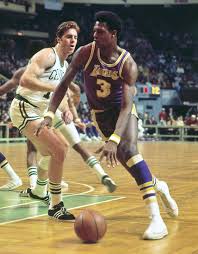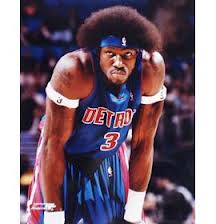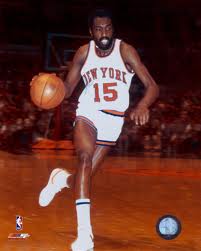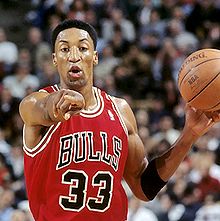 5. Elmore Smith
5. Elmore Smith
College: Kentucky State
NBA Draft: Round 1/Pick 3 by Buffalo Braves
NBA Playing Career: 1971-79
All-Star Appearances: 0
Career High Averages
Points per game: 18.3
Rebounds per game: 15.2
Assists per game: 2.5
Steals per game: 1.1
Blocks per game: 4.9
53.1 % FG
69.2 % FT
The mascot of Division II Kentucky State is the Thorobred, and the 7-0 Smith certainly played like one during his tenure there. Smith averaged more than 20ppg and 22rpg and kept being a dominant force during his first three professional years in Buffalo and Los Angeles. In one game for the Lakers, he blocked 17 shots – a NBA record which stands to this day.
Bad knees cut Smith’s career short, but at his best he was better than the likes of Rodman and Sikma. He remains one of the most underrated post players of the 1970s.
 4. Ben Wallace
4. Ben Wallace
College: Virginia Union
NBA Draft: Undrafted
NBA Playing Career: 1996-2012
All-Star Appearances: 4
Career High Averages
Points per game: 9.7
Rebounds per game: 15.4
Assists per game: 2.4
Steals per game: 1.8
Blocks per game: 3.5
57.8% FG
49.0% FT
It’s 1991. On a steamy Alabama afternoon at Charles Oakley’s summer basketball camp. Oak’s glaring at the kids in front of him, who for the last few minutes have been more interesting in goofing off than listening to him.
He has a point to make.
So, he chooses some random 6-4, 170 pound high schooler to make an example of. Oak fires the ball at the kid as soon as he hits the court. The leather hits young Ben Wallace square in the chest: It’s one-on-one time.
Giving up four inches and 70 pounds, Wallace took everything Oakley dished. They both ended up with bloody lips and noses. “I was impressed,” Oakley told nba.com. “Here I thought this group [of campers] were soft, unmotivated, unwilling to work. Then Ben stood up—he didn’t even want to play me at first—and showed me a good game. I could see a real fire in him.”
That fire led to a senior year in Division II averaging 12.5 points, 10.5 rebounds and 3.68 blocks per game. It then led to so much more: four NBA Defensive Player of the Year awards and a world championship.
 3. Terry Porter
3. Terry Porter
College: Wisconsin-Stevens Point
NBA Draft: Round 1/Pick 24 by Portland Trailblazers
NBA Playing Career: 1985-2002
All-Star Appearances: 2
Career High Averages
Points per game: 18.2
Rebounds per game: 4.6
Assists per game: 10.1
Steals per game: 2.0
Blocks per game: 0.2
51.9% FG
43.5% 3PT
Porter’s improvement within the first two years of college was stunning. The 6-3 shooting guard went from a 2 ppg, .08 apg player as a freshman, to a 11.4 ppg, 5.2 apg, 3.9 rpg producer as a sophomore and then 18.8 ppg, 4.2 apg, 5.2 apg monster as a junior.
Porter successfully transformed into a point guard in Portland, which he helped lead to two NBA Finals. He remains the Blazers’ all-time assists leader.
 2. Earl Monroe
2. Earl Monroe
College: Winston-Salem State University (N.C.)
NBA Draft: Round 1/Pick 2 by Baltimore Bullets
Playing Career: 1967-80
NBA All-Star Appearances: 4
Career High Averages
Points per game: 25.8
Rebounds per game: 5.7
Assists per game: 4.9
Steals per game: 1.5 (likely higher as he played eight years before this stat was officially kept)/
Blocks per game: N/A
51.7 % FG
87.5 % FT
During his senior year at Division II Winston-Salem State, Monroe averaged 41.5 ppg while shooting over 60% from the field. “Earl the Pearl” was still able to employ his improvisational, juke-and-jive style in the NBA, where he helped lead the New York Knicks to the 1973 title. In New York, the 6-3 guard teamed with Walt Frazier to form one of the greatest backcourts of all time.
 1. Scottie Pippen
1. Scottie Pippen
College: University of Central Arkansas
NBA Draft: Round 1/Pick 5 by Seattle SuperSonics
Playing Career: 1987-2004
All-Star Appearances: 7
Career High Averages
Points per game: 22.0
Rebounds per game: 8.7
Assists per game: 7.0
Steals per game: 2.9
Blocks per game: 1.2
52.0 % FG
37.4 % 3PT
Of all stories in which a player swings from utter anonymity to eventual superstardom, the most celebrated belongs to Pippen. From 6-1, 150-pound team manager as a freshman to 6-8, 200-pound all-conference player just a year and a half later, it’s likely no star’s story will ever come close to matching Pippen’s rise. By the time he was a senior at his Conway, Ark. NAIA school, Pippen averaged 23.6 ppg, 10.0 rpg and over three steals a game.
In the pros, the six-time champion’s calling card was defense but it shouldn’t be forgotten he packed a devastating arsenal on offense, too.
Follow Evin Demirel, who’s written for SLAM magazine, SB Nation Longform and the New York Times, on Twitter. He has blogged till the cows come home on Pippen and Joe Johnson.
10 Commandments For Aquafic Basic Safety In Swimming Swimming Pools annd okulista sąd rejonowy
szczecin prawobrzeże i zachód. 10 Commandments
For Aquatic Basic Safety In Swimming Swimming Pools
Suffer from kidney disease? improve your kidney health naturally
click now https://twitter.com/soniaw17/status/353268126143623168
If you want to drill down a whole lot deeper on the small-college question, take a look at my 2007 book about small college basketball, Cinderella Ball. The issues are quite complex, but the common thread is money. Read the book. It’s the only one out there to take a hard look at this question.
I totally whiffed there, Bill. Thanks for reminding about Randy, who should have been in the Top 10. I sure wish there was an up-to-date resource listing all the DII, DIII and NAIA NBA/ABA players.
Nice article – but you should include Randy Smith – Buffalo St. Div. III – 1971 7th Round pick of Buffalo Braves – help consecutive games record of 906 for awhile – MVP of 1978 All- Star game.